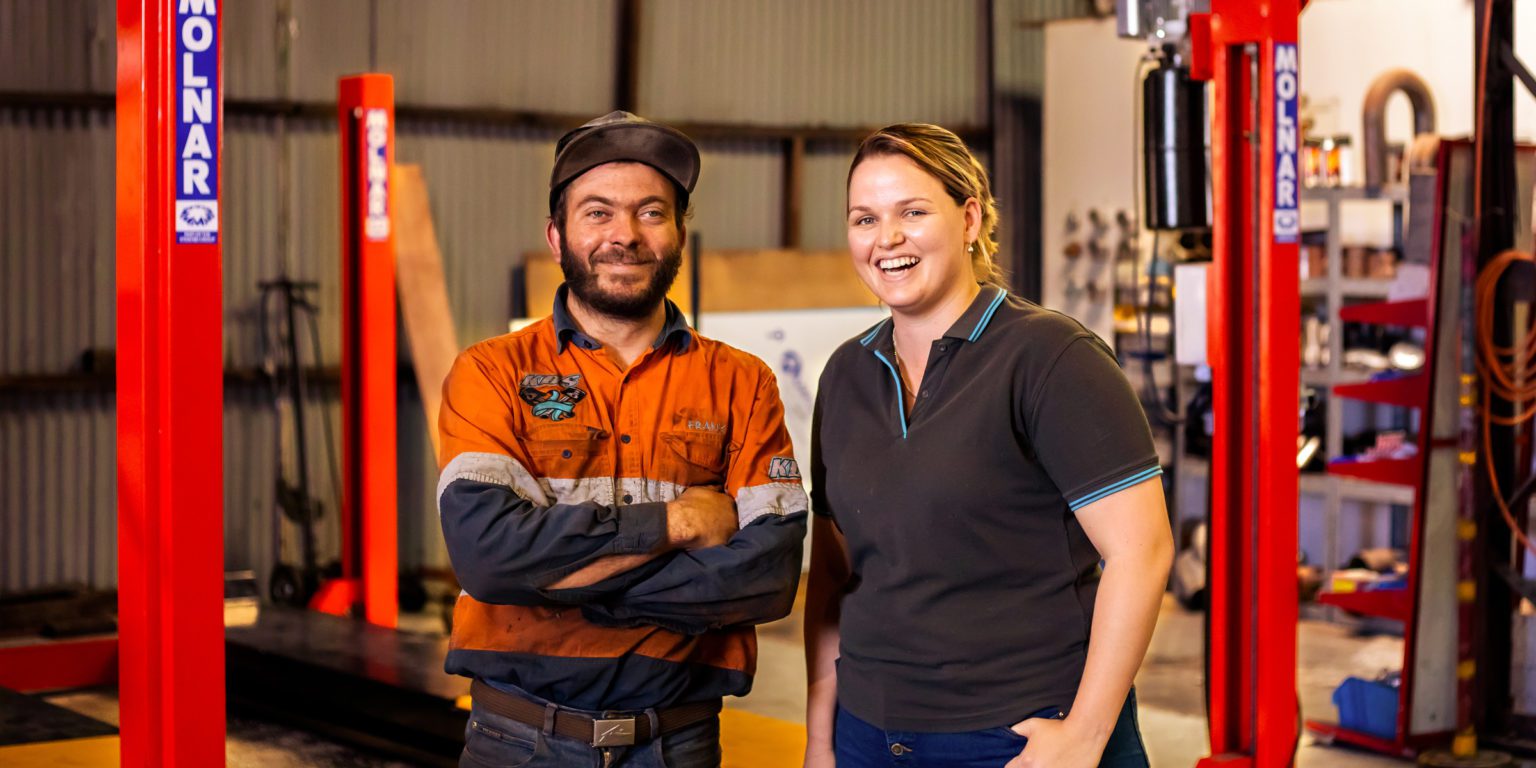At a glance
- White Rabbit Café and Arte Bianca Pizzeria teamed up to share space and resources, helping both businesses grow without extra rental costs.
- A clear agreement, open communication, and a flexible approach helped them navigate early challenges and turn the collaboration into a win-win partnership.
- Beyond sharing spaces and resources, small businesses can collaborate through joint marketing, product partnerships, and referral programs to expand their reach and boost sales.
When Daniel Antouny and Steven Fadda opened White Rabbit Cafe in Double Bay, they knew the challenges of running a hospitality business — rising costs, limited space, and the constant pressure to grow.
What if there was a way to expand their seating capacity on demand without committing to a new lease? As a regular at the pizza restaurant next door, Antouny noticed a recurring issue. “Nine times out of ten, I’d go to Arte Bianca, and there was nowhere for me to sit,” he recalls. That sparked an idea.
The two businesses explored the possibility of sharing their spaces, creating a setup that worked for both. Not long after, White Rabbit began using Arte Bianca’s seating during the day, while Arte Bianca extended its evening service into White Rabbit’s dining area. The result? More customers, better use of space, and a partnership that benefits both businesses.
Maximising underutilised resources
At White Rabbit Cafe, mornings were busy, but by mid-afternoon, the space sat mostly empty. Just next door, Arte Bianca Pizzeria had the opposite problem: demand surged at night, but their seating went unused during the day. “We were only using our venue 60% of the time that we were paying for,” says Daniel Antouny. “So why not make it work harder for both of us?”
Antouny and Arte Bianca’s owner, Mark Paterno, had built a good relationship over time and often crossed paths as neighbours. After a conversation about their challenges, they realised a simple collaboration could benefit them both.
They created a flexible system that allows them to extend capacity without unnecessary overheads. White Rabbit uses Arte Bianca’s space on weekdays at lunch when the pizzeria isn’t trading, while Arte Bianca extends its evening service into White Rabbit’s dining area. They also share the outdoor seating area and some kitchen equipment, keeping the setup efficient without long-term commitments.
A smarter way to scale in a slow economy
To stay nimble, White Rabbit runs on a just-in-time inventory system, tracking stock and staffing needs on a seven-day basis. “We track everything weekly — what we order, what we sell, what we waste. It keeps us lean,” Antouny explains. The collaboration follows the same principle: expanding when needed, without the burden of fixed costs.
This flexibility is especially valuable in a slow economy, where cash flow can be unpredictable. Instead of committing to long-term overheads, White Rabbit and Arte Bianca can adjust operations in real time, making them more resilient in tough market conditions.
The collaborative partnership also helped both businesses stay visible outside their usual hours, boosting awareness without extra marketing. “When you walk past a closed venue, you don’t pay attention. But when the lights are on, people take notice,” Antouny says.
How the two businesses made the business partnership work
No partnership runs smoothly from day one. While the collaboration offered clear benefits, there were challenges to iron out before White Rabbit and Arte Bianca found their rhythm.
Equipment breakdowns often surfaced at the worst possible time. If something stopped working overnight, White Rabbit would often only discover it in the morning — too late to fix before service started.
To avoid confusion and ensure a smooth handover between shifts, the two businesses put clear agreements and communication systems in place. “There’s always going to be grey areas,” Antouny says. “Having something in writing saved us a few times.”
However, some smaller operational details needed fine-tuning even after agreements were drafted. “Things like hand towels and other supplies we take for granted. You come in the next day and realise everything has been used.” These weren’t dealbreakers, but they required adjustments to keep things running smoothly.
A shared group chat replaced formal emails: “If something needs to be fixed or replaced, now we know it instantly,” Antouny says. Flexibility remained key — both businesses treated the partnership as a work in progress, adapting as they learned what worked best.
Now that the model runs efficiently, White Rabbit and Arte Bianca are exploring ways to expand their collaboration further. “Our next step is to develop a concept that not only brings new complementary menu items but also rethinks how we collaborate beyond a café and pizzeria setup,” Antouny says.
Different types of partnerships in business
Partnerships take many forms, helping small businesses expand, cut costs, and reach new customers. Here are some common ways to grow a small business through partnerships:
- Joint marketing campaigns. Businesses can join forces on a marketing campaign to reach a broader audience. Aromababy, a natural skincare brand for mothers and babies, partnered with Qiara, a pregnancy and breastfeeding probiotic, to cross-promote their products, share leads, and collaborate on social media.
- Co-hosted events. To find support, especially at the local level, businesses can co-host events to attract new customers, and strengthen their brand presence and community ties. A yoga studio and a wellness cafe could organise a mindfulness retreat, introducing each other’s offerings to their client bases.
- Product collaborations. Businesses can combine their expertise to create unique offerings that appeal to both audiences. A coffee roastery might partner with a chocolatier to develop a signature coffee-infused chocolate line.
- Shared spaces and resources. Companies can share physical spaces and equipment to optimise costs and resources. White Rabbit Café and Arte Bianca Pizzeria share dining areas and kitchen facilities, expanding capacity without taking on extra rental costs.
- Cross-promotions. Businesses can promote each other’s products or services to boost exposure without extra marketing spend. A hair salon could offer discount vouchers for a local beauty spa, and the spa could do the same in return.
- Referral partnerships. Businesses can agree to refer customers to each other, generating sales without additional advertising costs. A wedding planner and a florist might recommend each other’s services to their clients.
How to create a successful business partnership that lasts
While business partnerships offer advantages such as shared resources and expanded networks, they also come with challenges like potential disagreements and shared liabilities. Here are key insights to help small business owners set up and sustain a successful collaboration.
- Choose the right partner. A partnership should be built on mutual benefit and shared values. Look for businesses that complement yours, whether through a shared audience, compatible products, or ways to support each other’s operations.
- Define clear agreements upfront. Even with a strong relationship, a written agreement helps prevent misunderstandings and legal disputes. From defining responsibilities to outlining how shared resources will be managed, a written agreement ensures both parties know what to expect and how to handle challenges.
- Keep communication open. Miscommunication can cause friction, especially when businesses operate at different times. Setting up fast and informal communication channels — like a shared group chat — helps address issues in real time, preventing minor problems from escalating.
- Favour agility in the agreement. Starting with a short-term agreement that can be reviewed and extended allows both businesses to adjust as needed. Partnerships work best when they keep costs low and share resources efficiently, rather than locking into rigid commitments.
Before entering an agreement, assess whether it aligns with your cash flow needs and long-term strategy. Need help managing cash flow while scaling your business? Speak to a Prospa specialist today.








